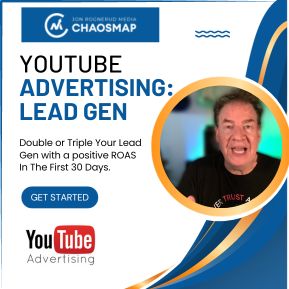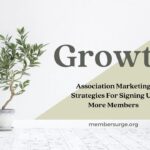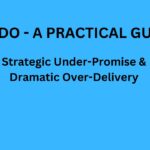As any VP of Marketing for a B2B product and service business, generating Sales Qualified Leads (SQLs) is paramount for sustainable growth.
Google Ads is a potent platform that offers various channels to achieve this.
We’ll also discuss how to use Google search ads to leverage Ad Scent Consistency to get the highest quality leads and best opportunities for sales close ratios.
When generating highly qualified leads from Google, you can leverage many aspects of their ad ecosystem. There are several types (search, video, display) that you can use.
However, there are only 3 areas that you must focus on for ongoing consistency.
Let’s delve into detailed insights for each type you must consider:
1. Search (Text) Ads:
- High-Intent Keyword Targeting:
- Focus on targeting keywords that demonstrate purchase intent. For instance, instead of targeting “CRM systems”, opt for “best CRM for small businesses” or “CRM system pricing”.
- These long-tail keywords are specific and often indicate that the searcher is closer to making a buying decision.
- Use Ad Extensions:
- Employ site link extensions, callout extensions, and structured snippet extensions to showcase unique selling points, offers, and key features.
- This not only improves visibility but also provides more reasons for a searcher to click. The Google algo favors “completeness” in your ad structures.
- Landing Page Optimization:
- Ensure that the landing page is relevant to the ad copy and the targeted keywords. A consistent message between the ad copy and the landing page increases conversion rates.
- The page should load quickly, be mobile-friendly, and the lead capture form should be simple and intuitive.
2. YouTube Ads (videos from your channel or others):
- Leverage Video Sequencing:
- Start with a broad, awareness-focused video to introduce the pain points your service solves.
- Follow this with more detailed videos and targeting that delve into the solution, culminating in a direct CTA. This sequence can nurture potential SQLs down the funnel.
- Targeting and Retargeting:
- Begin with a broad audience but use YouTube’s powerful targeting options to refine this over time. Note/important: we use an internal creative brief to establish the exact audiences to use. This provides even better targeting, messaging and conversion options. Don’t just leverage broad.
- Utilize retargeting to show your ads to users who’ve interacted with your brand but haven’t converted.
- Clear and Strong CTAs:
- Your video content should always end with a compelling call-to-action (CTA). This might be to schedule a demo, sign up for a free trial, or simply learn more.
- Make the next steps clear and easy.
3. Your Branded Ads:
- Defend Your Brand:
- Competitors can bid on your brand name. By running branded ads, you ensure that when potential clients search for your business, your ads appear at the top, defending against competitors trying to poach your potential leads.
- Do not miss this opportunity for strong lead generation and brand positioning!
- Leverage Customer Testimonials and Reviews:
- Branded searches indicate that the searcher is already aware of your brand.
- Use this opportunity to reinforce trust by showcasing customer testimonials, awards, and recognitions in your ad copy.
>> HOW TO GENERATE HIGH CONVERTING SEARCH ADS <<
The art of creating high-converting search text ads goes beyond the basic principles.
While many marketers know the foundational techniques, there are subtle nuances that can make a significant difference in click-through and conversion rates.
Here are some advanced insights and things you must be clear on:
- Deep Understanding of the Target Audience:
- Craft your message to resonate with the searcher’s specific pain points, desires, or needs. This means understanding not just what they’re searching for, but why.
- Are they looking for cost-efficiency, quality, reliability, or fast service? Adjust your ad’s messaging to emphasize the particular value they seek.
- Utilize Emotional Triggers:
- While B2B marketing is often seen as logical and data-driven, it’s essential to remember that business decisions are made by humans driven by emotions.
- Use emotional triggers like urgency (“Limited Offer”), exclusivity (“Be the first to…”), or safety (“Trusted by 1,000+ companies”).
- Ad Scent and Consistency:
- This refers to maintaining a consistent “scent” between the ad copy and its corresponding landing page. If your ad promises a discount, the landing page should immediately reflect that.
- If there’s a mismatch, visitors will bounce, wasting your PPC spend.
- Use Numbers and Symbols:
- Ads that include numbers (e.g., “Save 25%”, “1000+ Satisfied Clients”) or symbols (e.g., &, $, %) tend to stand out more and have higher CTRs.
- They break the monotony of text and provide clear, tangible benefits or offers.
- Test Different Calls-to-Action (CTAs):
- A compelling CTA can drastically affect conversions. Don’t just settle for “Learn More” or “Buy Now”.
- Test variations that might resonate more with your audience, like “Discover”, “Get Started”, or “See the Difference”.
- Dynamic Keyword Insertion:
- This feature allows the ad to automatically adjust the text to include the exact keyword phrase the user searched for, making the ad seem incredibly relevant.
- However, use it judiciously to avoid awkwardly phrased ads. You needs to monitor and test this carefully.
- Utilize All Available Ad Space:
- Max out your character limits where it makes sense. Longer, well-crafted ads give you more space to convince a searcher to click on your ad over others.
- This doesn’t mean to be verbose, but rather, utilize the space effectively to convey your value proposition.
- Display URLs Are Also Ad Copy:
- While the Display URL in Google Ads doesn’t need to link to an actual page (since the Final URL is the actual landing page), it should be treated as part of your ad message.
- Use it to reinforce your offer, brand, or value proposition, like “example.com/free-call”.
- Pre-Qualify Clicks:
- If your service is high-end or niche-specific, mention that in the ad. It might reduce the number of clicks, but the ones you do get will be from an audience more likely to convert.
- For instance, “Premium CRM for Large Enterprises” ensures that small businesses won’t waste your ad budget.
- Continuous A/B Testing:
- Digital advertising is dynamic. Regularly test different headlines, descriptions, and CTAs to see what resonates the most with your target audience.
- Over time, these incremental improvements can lead to significantly better performance.
Crafting a high-converting search text ad is a blend of art and science. And, it starts with understanding your audience, and how your messaging is positioned in ads, landers and scripts (sales team) and have a clear offer structure and next steps process.
So, it requires understanding the audience’s psychology, iterating based on data, and staying updated with platform-specific nuances and best practices.
In conclusion, while each channel within Google Ads serves a distinct purpose, they should be utilized cohesively in a well-structured marketing strategy.
Continuous testing, refinement, and optimization, backed by a deep understanding of the target audience, will be crucial in driving SQLs for a B2B service business.
Jon Rognerud and Chaosmap work with Fortune 500 companies, associations and entrepreneurs to create digital traffic strategies that scale up members, customers, leads and sales with profitable returns. Mr. Rognerud wrote a best-selling book (Buy On Amazon), “The Ultimate Guide To Optimizing Your Website” (Entrepreneur). Connect directly here.







